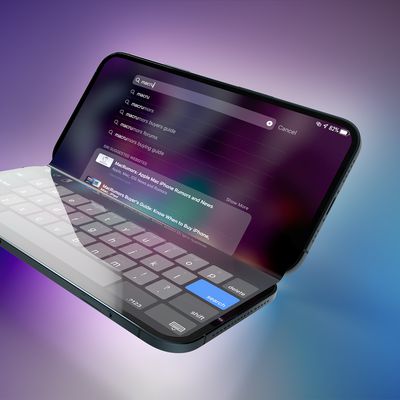Apple Intelligence Not Trained on YouTube Content, Says Apple
Apple on Thursday addressed concerns about its use of AI training data, following an investigation that revealed Apple, along with other major tech companies, had used YouTube subtitles to train their artificial intelligence models.

The investigation by Wired earlier this week reported that over 170,000 videos from popular content creators were part of a dataset used to train AI models. Apple specifically used this dataset in the development of its open-source OpenELM models, which were made public in April.
However, Apple has now confirmed to 9to5Mac that OpenELM does not power any of its AI or machine learning features, including the company's Apple Intelligence system. Apple clarified that OpenELM was created solely for research purposes, with the aim of advancing open-source large language model development.
On releasing OpenELM on the Hugging Face Hub, a community for sharing AI code, Apple researchers described it as a "state-of-the-art open language model" that had been designed to "empower and enrich the open research community." The model is also available through Apple's Machine Learning Research website. Apple has stated that it has no plans to develop new versions of the OpenELM model.
The company emphasized that since OpenELM is not integrated into Apple Intelligence, the "YouTube Subtitles" dataset is not being used to power any of its commercial AI features. Apple reiterated its previous statement that Apple Intelligence models are trained on "licensed data, including data selected to enhance specific features, as well as publicly available data collected by our web-crawler."
The Wired report detailed how companies including Apple, Anthropic, and NVIDIA had used the "YouTube Subtitles" dataset for AI model training. This dataset is part of a larger collection known as "The Pile," which is compiled by the non-profit organization EleutherAI.
Popular Stories
In select U.S. states, residents can add their driver's license or state ID to the Apple Wallet app on the iPhone and Apple Watch, and then use it to display proof of identity or age at select airports and businesses, and in select apps.
The feature is currently available in 13 U.S. states and Puerto Rico, and it is expected to launch in at least seven more in the future.
To set up the...
While the iPhone 18 Pro and iPhone 18 Pro Max are not expected to launch for another nine months, there are already plenty of rumors about the devices.
Below, we have recapped 12 features rumored for the iPhone 18 Pro models.
The same overall design is expected, with 6.3-inch and 6.9-inch display sizes, and a "plateau" housing three rear cameras
Under-screen Face ID
Front camera in...
Apple hasn't updated the Apple TV 4K since 2022, and 2025 was supposed to be the year that we got a refresh. There were rumors suggesting Apple would release the new Apple TV before the end of 2025, but it looks like that's not going to happen now.
Subscribe to the MacRumors YouTube channel for more videos.
Bloomberg's Mark Gurman said several times across 2024 and 2025 that Apple would...
Earlier this month, Apple released iOS 26.2, following more than a month of beta testing. It is a big update, with many new features and changes for iPhones.
iOS 26.2 adds a Liquid Glass slider for the Lock Screen's clock, offline lyrics in Apple Music, and more. Below, we have highlighted a total of eight new features.
Liquid Glass Slider on Lock Screen
A new slider in the Lock...
The European Commission today praised the interoperability changes that Apple is introducing in iOS 26.3, once again crediting the Digital Markets Act (DMA) with bringing "new opportunities" to European users and developers.
The Digital Markets Act requires Apple to provide third-party accessories with the same capabilities and access to device features that Apple's own products get. In iOS...
2026 is almost upon us, and a new year is a good time to try out some new apps. We've rounded up 10 excellent Mac apps that are worth checking out.
Subscribe to the MacRumors YouTube channel for more videos.
Alt-Tab (Free) - Alt-Tab brings a Windows-style alt + tab thumbnail preview option to the Mac. You can see a full window preview of open apps and app windows.
One Thing (Free) -...
Apple's first foldable iPhone, rumored for release next year, may turn out to be smaller than most people imagine, if a recent report is anything to go by. According to The Information, the outer display on the book-style device will measure just 5.3 inches – that's smaller than the 5.4-inch screen on the iPhone mini, a line Apple discontinued in 2022 due to poor sales. The report has led ...
Samsung is working on a new foldable smartphone that's wider and shorter than the models that it's released before, according to Korean news site ETNews. The "Wide Fold" will compete with Apple's iPhone Fold that's set to launch in September 2026.
Samsung's existing Galaxy Z Fold7 display is 6.5 inches when closed, and 8 inches when open, with a 21:9 aspect ratio when folded and a 20:18...
Apple is working on a foldable iPhone that's set to come out in September 2026, and rumors suggest that it will have a display that's around 5.4 inches when closed and 7.6 inches when open. Exact measurements vary based on rumors, but one 3D designer has created a mockup based on what we've heard so far.
On MakerWorld, a user named Subsy has uploaded a 1:1 iPhone Fold replica (via Macworld), ...

























